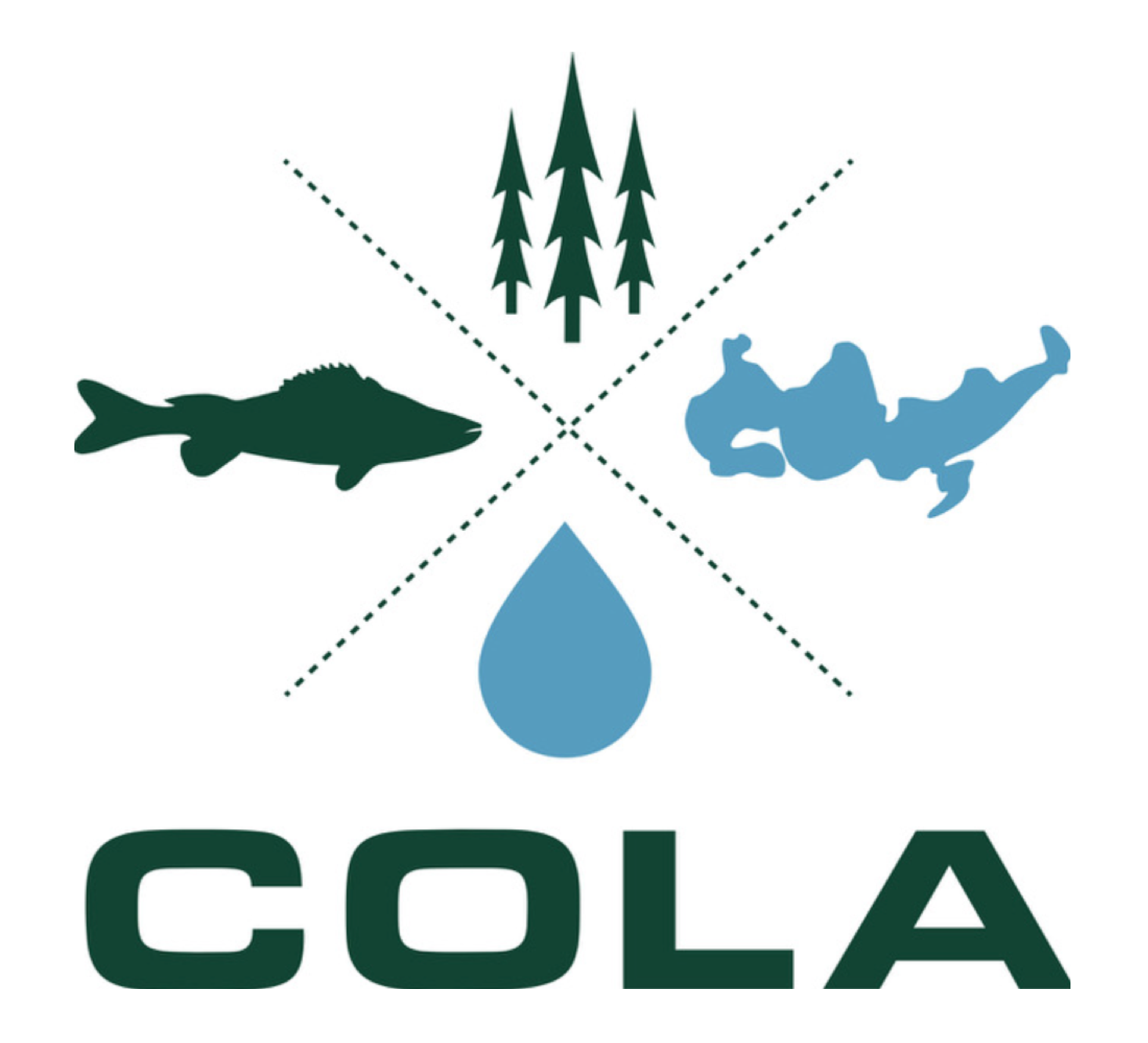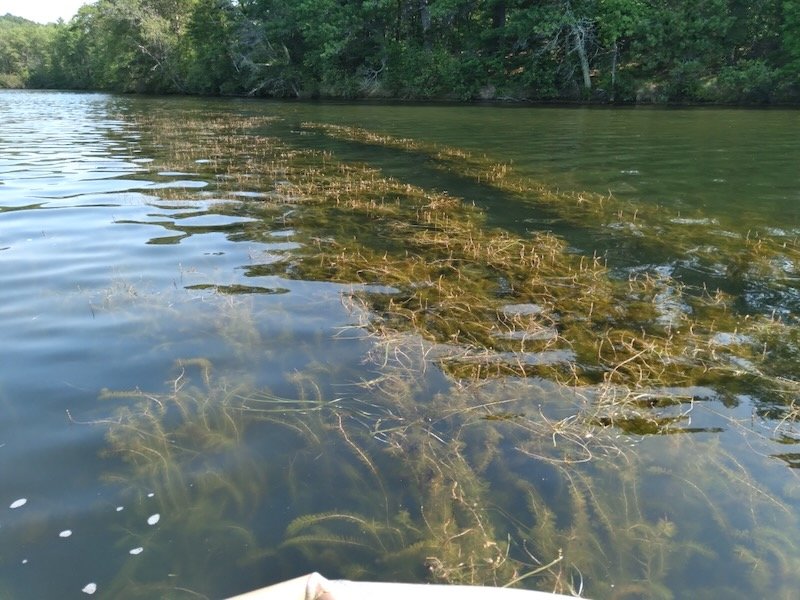Invasive Species
Two invasive species are now firmly established in the LCO lakes, curly-leaf pondweed and Eurasian watermilfoil. Invasive aquatic plant species are nearly impossible to eradicate once introduced to lakes and streams. They were probably brought to LCO by boats from infested lakes, and their exuberant growth has been fueled by excessive phosphorus concentrations in LCO’s water. Unfortunately, both invasive species are easily distributed throughout the LCO lakes by plant fragments scattered by boat traffic. These invasives grow rapidly to form large mats that limit boat navigation and alter the fishery habitat. Late in the season, the invasive plants die back, settle to the lake bottom and decompose, which adds phosphorus and depresses dissolved oxygen concentrations, further harming the fishery. Of the two invasives, Eurasian watermilfoil is the real beast. It increased rapidly since it was first noticed 2015 and is now distributed throughout both LCO lakes. Despite COLA’s best efforts, its spread is accelerating.
Curly-leaf pondweed and Eurasian watermilfoil identification
Curly-Leaf Pondweed
A small curly-leaf pondweed (CLP) infestation was first discovered in LCO in July 2006. The infestation was located near the entrance of Musky Bay and encompassed a dense patch that was approximately 0.20 acre.
After 2006, CLP spread throughout LCO. The annual midsummer die‐off of curly-leaf pondweed (CLP) releases nutrients back into the water column, which trigger algal blooms and create turbid water conditions. In recent years CLP infestation has been brought under moderate control using herbicides, hand-pulling, and most recently, the Eco-Harvester.
Eurasian Watermilfoil
A small patch of Eurasian watermilfoil (Myriophyllum spicatum L.) was discovered in little LCO in 2015. Eurasian watermilfoil spreads very quickly and can form dense mats that crowd out native species. Eurasian watermilfoil has been described as "CLP on steroids".
Extreme vigilance is needed to control the spread of this invasive. It is unlikely that the Eco-Harvester can keep up with the infestation, and herbicides will be needed.
Lac Courte Oreilles Aquatic Invasive Species Lake Monitoring Training Manual
Lac Courte Oreilles & Little Lac Courte Oreilles 2019 Aquatic Plant Survey Report
As in past years, aquatic invasive species (AIS) of particular concern are curly-leaf pondweed and Eurasian watermilfoil on both Lac Courte Oreilles and Little Lac Courte Oreilles. In 2019, Wisconsin Lake & Pond Resource, LLC was contacted by COLA to provide an aquatic plant survey focusing on AIS for each lake. The complete report is available here.
REPORTS FROM <2019
Available here.
How can you help?
Please support COLA’s Clean Boat Initiative by routinely inspecting all of your watercraft for AIS. If you have the time, please join COLA’s AIS or Eco-Harvester work groups to help identify and remove AIS.
Curly-leaf pondweed. Seed pod "turions" in the center of of photo. Seed pods grow along the stem between the leaves and the stem anywhere along the entire column from roots to the surfacing plant.
Curly-leaf pondweed. An invasive species infesting Lac Courte Oreilles. Invasive is slightly smaller than the native pondweed, a locally-occurring species. CLP has a reddish tint on the leaves and the stems. The leaves are smaller and the curl is tighter on the invasive than it is on the nativel. Note the size of plant as compared to the hands.
Eurasian watermilfoil.
Unloading of Eurasian watermilfoil from EcoHarvester.
Eurasian watermilfoil after EcoHarvester removed one strip.
Related Stories in Short Ears, Long Tales
Issue 22 'Lac Courte Oreilles Boat Landings'
Issue 39 ‘A Short Lesson on the Ecology of Two Invasive Plants’
Issue 40 ‘Protecting the Lakes: Aquatic Invasive Species Mapping and Management’
Issue 47 ‘The Early Voyages of the Eco-Harvester’
Issue 48 ‘Invasive Mystery Snails’
Issue 50 ‘Milfoil(ed) Again’








